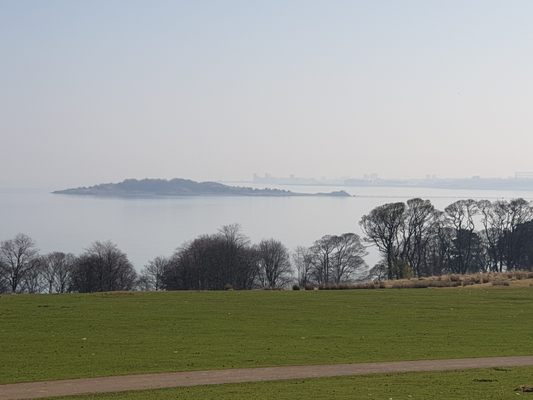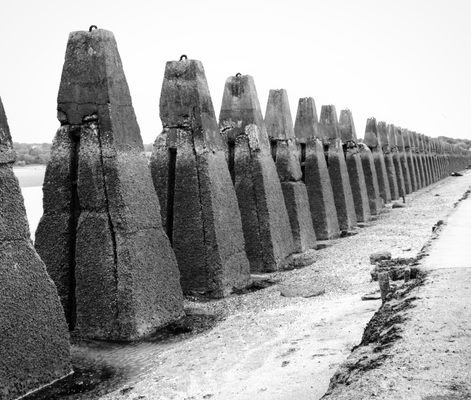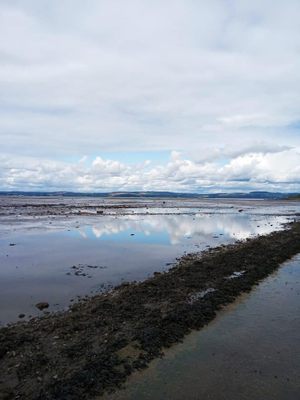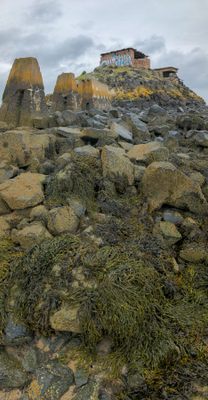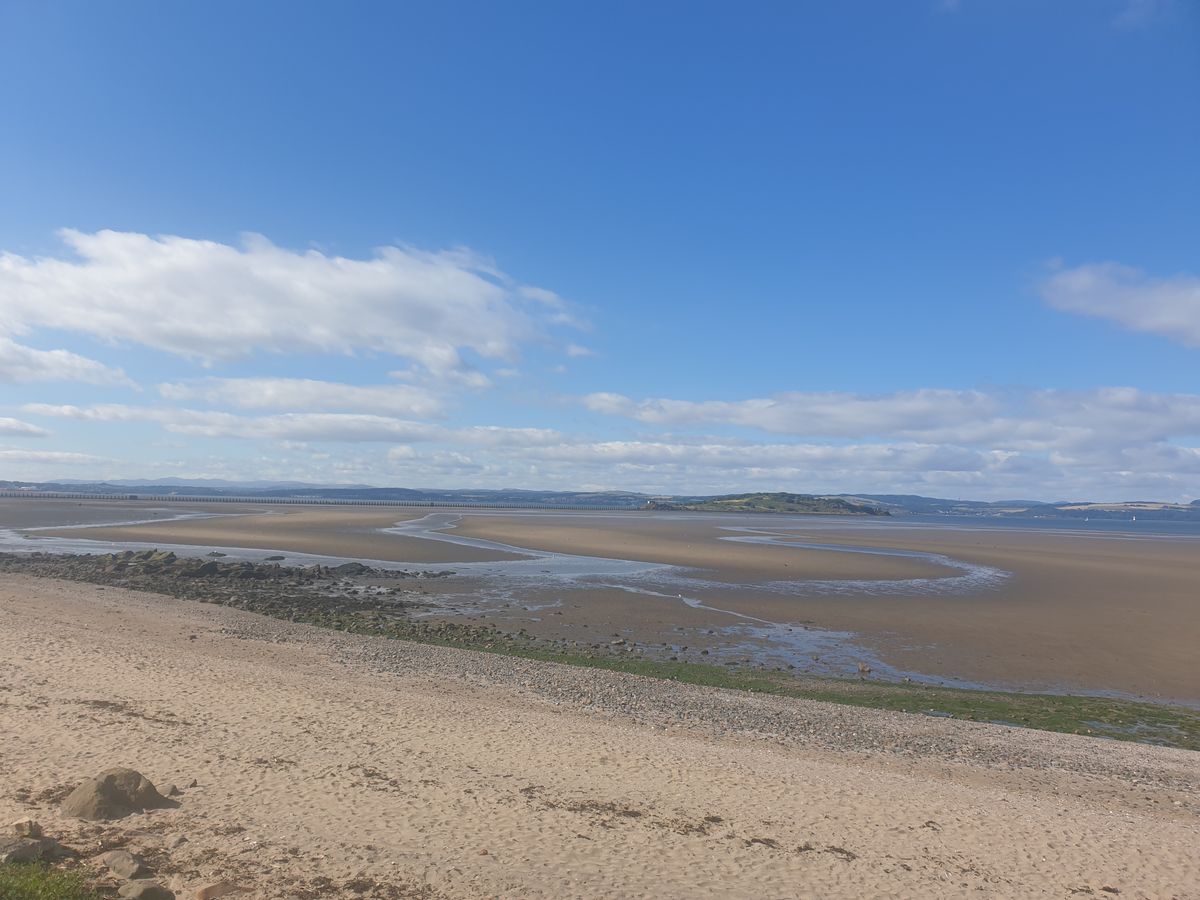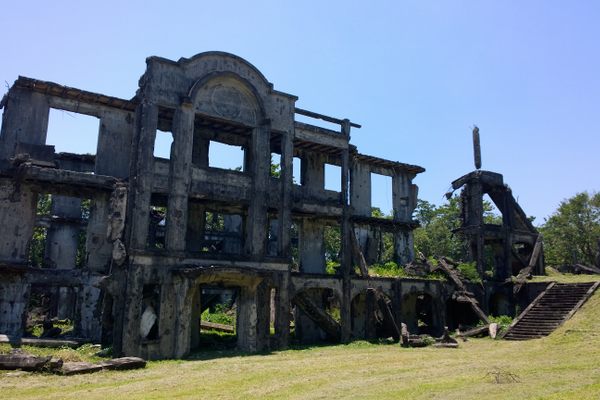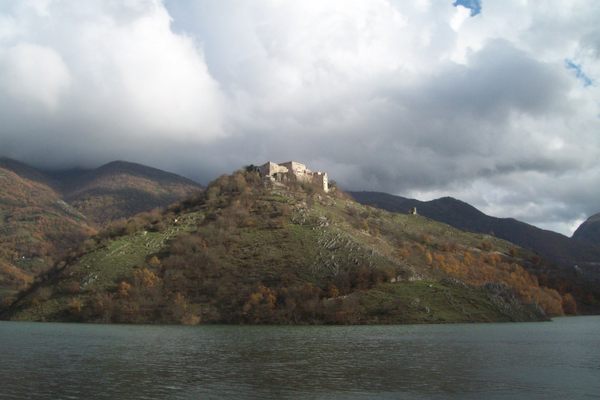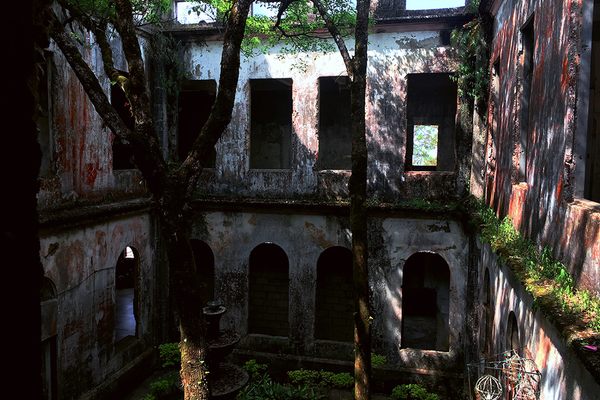About
Across a causeway, in the middle of the Firth of Forth, lies the ghost island of Cramond.
The causeway itself is a spectacle. Longer than the island, it's lined with massive concrete teeth designed during WW II to stop boats and submarines slipping through at high tide. The row of identical pylons creates an imposing—if accidental—piece of Brutalist architecture, broken here and there where a pylon has fallen to the waves.
Though deserted for most of its history, the island’s few inhabitants have left their mark. Most notably, Cramond was fortified during World War II to repel a potential invasion via the Forth River. The tiny, 0.3-mile-long island is littered with concrete bunkers. Gun emplacements on the northeastern point guarded the river, while the brick building at the southern end housed a spotlight that swept the causeway.
Of course, the expected invasion never came, and the island was once again deserted. Its bunkers have since become a canvas for anyone who fancies themselves a graffiti artist, resulting in incongruous splashes of color in the otherwise drab Scottish estuary. The combination of wilderness, wartime relics, and present-day vandalism lends the island a unique atmosphere.
Prior to its wartime use, Cramond Island was occupied occasionally by shepherds and game shooters, and was even used as a summer vacation spot in the 19th century. Remnants of one farmstead-turned-holiday-home can be found by digging about in the foliage, while another stands crumbling on the western cliffs.
From the island’s highest point, one can see the three Forth Bridges, Fife, and the Edinburgh skyline, as well as the island of Inchcolm to the north. This was similarly fortified during the war, and a submarine net would once have stretched between the two islands.
At the mainland end of the causeway, Cramond village offers such oddities as Edinburgh’s supposedly smallest art gallery and the site of a Roman fort—one of the northernmost in the British Isles.
There's also a noticeboard detailing tide times. Visitors should pay attention if they don't wish to become short-term Robinson Crusoe's, as in one case from 2011 involving a man named, improbably, Daniel Defoe.
Related Tags
Know Before You Go
The 41 bus runs between the Edinburgh city center and Cramond village. Check tide times before crossing the causeway. A signpost with times is displayed to the right of the causeway to the island on a red pole north of the circular drive.
The times for the tide can also be found here.
Flavors of Scotland: Beyond the Haggis
Smoked seafood, single malt whisky, and warm hospitality.
Book NowPublished
October 13, 2017

